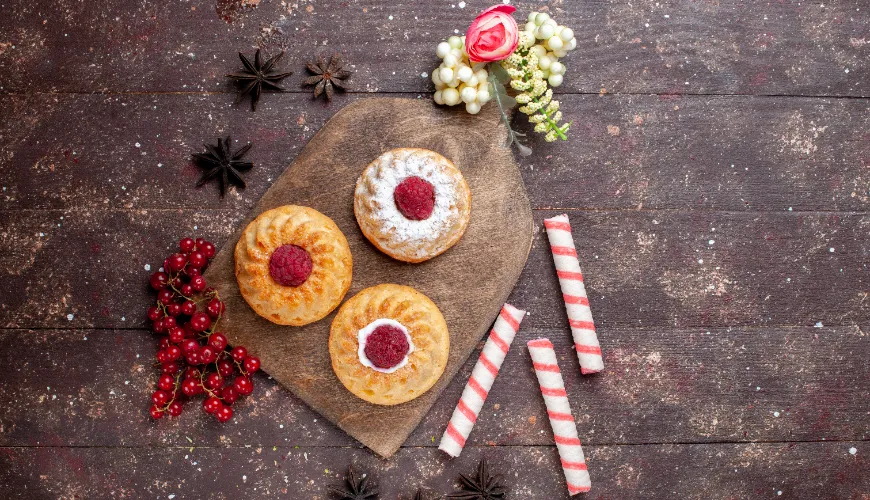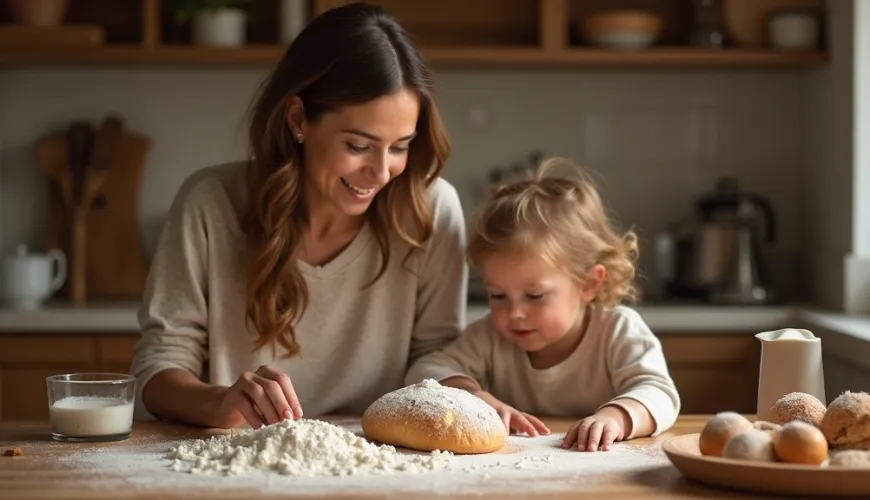
Do you want to know more about Vatican happiness bread and its origin

The Secret of Vatican Happiness Bread - A Tradition that Connects People and Tastes
In today's fast-paced world, where many of us strive to balance work, family, and personal peace, old traditions are making a comeback. One tradition that has been regaining popularity in recent years is Vatican Happiness Bread – a sweet, leavened cake that isn't sold in stores but is passed from hand to hand. This form of sharing is what makes it special. It carries not only the aroma of cinnamon and vanilla but also a message of happiness, faith, and human connection.
What does this peculiar name actually mean? And why is there so much discussion, so many recipes, and questions about the "Vatican Bread" on the internet?
The Origin and Symbolism of Door-to-Door Baking
Although the name suggests a direct link to the Vatican or the Catholic Church, Vatican Happiness Bread likely didn't originate in the papal kitchens. Its origin is shrouded in mystery and is known by different names in various parts of the world – for example, Amish Friendship Bread, Holy Spirit Bread, or simply "Happiness Cake."
The core of this tradition is primarily sharing. A person who receives the bread also receives a portion of the dough (starter) and instructions on how to care for it. Every day, the "host" caring for the dough tends to it, adds ingredients, stirs, and lets it rest. After several days, a portion of the dough is taken and given away – usually to three people who are family, friends, or neighbors. The rest is baked into a sweet bread or cake. The final product is usually moist, sweet, often with cinnamon, apples, or nuts.
In this way, the recipe and the ritual itself spread like a chain reaction. It's not just about baking, but about an act of kindness and connection – and that's where the charm and strength of this tradition lie.
Vatican Happiness Bread - A Recipe That Travels Through Hands and Generations
If the idea of making Vatican Happiness Bread at home intrigues you, the recipe is no secret – but it's a bit different from the usual recipes we're used to. It's not about quickly baking a cake for Sunday lunch but a nine-day process. Each day has its instructions and tasks to follow. Some people claim that during this time, one should think positively, wish happiness to others, and let the dough "charge with good energy."
Below is an example schedule for caring for the dough:
Day 1: Receive the starter – it must not be refrigerated, nor should metal containers be used. Only glass or plastic.
Days 2–4: Do not stir the dough. Just let it live.
Day 5: Add 1 cup of sugar, 1 cup of flour, and 1 cup of milk. Stir with a wooden or plastic spoon.
Days 6–9: Stir the dough every day.
Day 10: Add sugar, flour, and milk again (one cup each). Then divide into four parts – give three away, keep the fourth, and bake the bread.
The final recipe may vary slightly, but it usually includes eggs, oil, flour, sugar, cinnamon, baking powder, milk, and optional ingredients like chopped nuts, dried fruit, or chocolate chips.
While the whole process may seem lengthy, many claim that it's in this slowness that the beauty and meditative value of the entire ritual lie.
Vatican Happiness Bread in the Digital Age
Previously, the starter was passed personally, from hand to hand. Today, the tradition has also become an internet phenomenon. Searches like "Vatican Happiness Bread recipe PDF" or "PDF Vatican Happiness Bread text" show how people worldwide seek precise instructions or share experiences. Discussions on the topic of Vatican Happiness Bread are also common – some focus on the recipe itself, while others explore the spiritual or social significance of this baking.
For example, on platforms like eMimino.cz or modrykonik.cz, posts appear like: "I received the dough but forgot what to do next. Does anyone have a PDF guide?" or "Is it a superstition, or is it meant to be a spiritual experience?" This polarity – between a baking ritual and spiritual symbolism – makes the bread something more than just flour and sugar.
At the same time, concerns arise. Some people view the entire tradition as a chain letter, suggesting that if the dough is not given away or is discarded, it will bring bad luck. Others argue that it is a symbol of sharing, similar to Christmas gingerbread or Easter bread – and that there's no magic in the dough, just love and care.
When Old Recipes Can Unite People
Imagine an ordinary morning in a small neighborhood. Mrs. Nováková knocks on her neighbor's door with a smile and a jar of dough. "Good morning, here's the dough for Vatican bread. It's such a lovely tradition, you bake for ten days, then make a cake and give three parts away." The neighbor is initially surprised but accepts. A week later, she bakes the bread with her daughter, coating it in cinnamon sugar, and the kitchen smells like grandma's cottage. The next day, she gives the starter to a colleague at work. And so the circle closes – or continues?
At a time when people often live isolated in their homes, such a small gesture can be what rekindles neighborhood relations, supports intergenerational dialogue, or simply brings a smile to an ordinary day.
A quote often associated with this bread goes:
"Happiness that is shared, multiplies." And that is the main message of Vatican Happiness Bread.
Where to Find Recipes and Instructions?
If you've been thinking you'd like to try the bread but haven't received a starter from anyone, don't worry. There are several versions of the recipe for making the starter at home "from scratch." Basic ingredients and a willingness to experiment are all you need. There are also guides available for download in PDF format – by entering keywords like "recept na vatikánský chléb štěstí pdf" you'll find several versions in Czech and Slovak.
Among the most recommended sites are recipe portals or discussion forums, where people share not only ingredients and procedures but also photos of their creations and baking impressions. It's fascinating to see how a simple bread becomes a topic that connects housewives, students, workers, and seniors.
Thus, Vatican Happiness Bread is not just about the final taste but about the journey, the care, and the people involved in this story. Whether you believe in its magical power or just enjoy baking with a story, one thing is certain – bread that connects people has something special about it.

